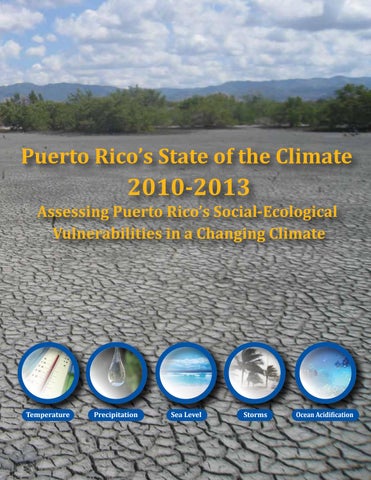
# Ancient Fire Custodians: The Early Indigenous Utilization of Fire in Tasmania to Alter the Landscape
**Journal:** [Science Advances](https://doi.org/10.1126/sciadv.adp6579), November 15, 2024, DOI: 10.1126/sciadv.adp6579 | *Reading time: 6 minutes*
—
Over 41,600 years ago, some of the first humans to settle in Tasmania, the southern isle that is now a part of Australia, initiated the use of fire to convert dense, moist forests into more open terrains that facilitated hunting, gathering, and ultimately, survival. According to pioneering new findings, this discovery offers the *earliest verified proof* of deliberate, fire-based landscape manipulation in Tasmania—highlighting the extraordinary adaptability and ingenuity of these ancient Indigenous societies.
—
## Revealing Ancient Landscape Stewards
The study, published in *Science Advances*, was led by a group from the University of Cambridge and the Australian National University (ANU), under the direction of Dr. Matthew Adeleye. To uncover the historical narratives hidden within Tasmania’s ancient sediments, the team conducted comprehensive analyses of **charcoal** and **pollen** remnants from sediment cores taken from Tasmania’s Bass Strait islands. These investigations unveiled that Tasmania’s Indigenous communities—known as the **Palawa** or **Pakana**—proactively used controlled burning techniques to shape dense forests purposefully, starting as early as **41,600 years ago**, nearly 2,000 years earlier than previously established.
Adeleye, who earned his PhD at ANU, stated, “These early Tasmanian societies were the first custodians of the land.” The management was evidenced by an increase in charcoal layers observed at various archaeological sites, directly linked to significant shifts in vegetation patterns. Moist forests transitioned into more open landscapes, enhancing hunting opportunities and expanding areas for gathering and transit.
This transformative practice was essential for survival, especially during a period when Tasmania was linked to mainland Australia and belonged to the broader landmass referred to as **Sahul**. By utilizing fire as a sophisticated instrument, the Palawa adjusted their surroundings in response to the severe, glacial conditions of the Ice Age.
—
## The Study of Fire and Adaptation
The research behind this revelation involved the careful examination of Tasmania’s ancient sediments. Scientists scrutinized **charcoal** to trace historical fire occurrences and analyzed **pollen grains** to recognize shifts in vegetation before and after these fires.
Dr. Adeleye remarked, “We observe a distinct cultural fire pattern among these early human groups. As forested regions were ignited, **fire-adapted species**, particularly *Eucalyptus*, began to prevail in the landscape, especially in the more humid regions of the Bass Strait islands.” The ecological changes following these controlled burns aided in alleviating the dense, tangled vegetation of the wet forests, creating open spaces conducive to movement, hunting, and the growth of particular vital plants.
This approach to landscape stewardship—now acknowledged as **cultural burning**—was essential, not only for survival but to promote the proliferation and prominence of fire-resistant ecosystems. These early humans actively managed their land, creating environments rich in resources and biodiversity tailored to their necessities. Additionally, cultural burning fostered the flourishing of certain species like *Eucalyptus*, which have become emblematic of Australian ecology yet are also uniquely suited to periodic fire patterns.
—
## Connecting Past and Future
This revelation holds significance not just for understanding Tasmania’s history but also for tackling **contemporary environmental issues**, particularly in light of the growing wildfire risks associated with climate change. Cultural burning, still observed by numerous Indigenous communities, embodies a crucial convergence of ancestral wisdom and modern ecological management.
As **Professor Simon Haberle** from ANU noted, “To safeguard Tasmanian and Australian landscapes for future generations, it is vital to engage with and integrate the traditional knowledge of Indigenous peoples. Their insights have been crucial in steering us toward sustainable land management practices.”
In Australia, initiatives aiming to incorporate Indigenous fire methodologies into mainstream land management have encountered both excitement and hesitance. While cultural burning provides historical evidence for responsible fire management, its modern application has often been hindered by contemporary land use policies and misconceptions regarding its ecological advantages. Nonetheless, as Adeleye’s research highlights, acknowledging and adopting these ancient fire-related techniques presents profound implications for not only conserving biodiversity but also mitigating uncontrolled wildfires that pose significant risks in the 21st century.
—
## Glossary
– **Palawa/Pakana**: The Indigenous peoples of Tasmania, also referred to in contemporary terms as *Lutruwita*.
– **Cultural Burning**: An age-old method of utilizing controlled fires in cycles to manage environments, enhance biodiversity, and lessen fire hazards.
– **Sahul**: A prehistoric superlandmass that once connected mainland Australia, Tasmania, and New Guinea, facilitating migration routes for ancient humans.
– **Charcoal Analysis**: The investigation of microscopic charcoal fragments found